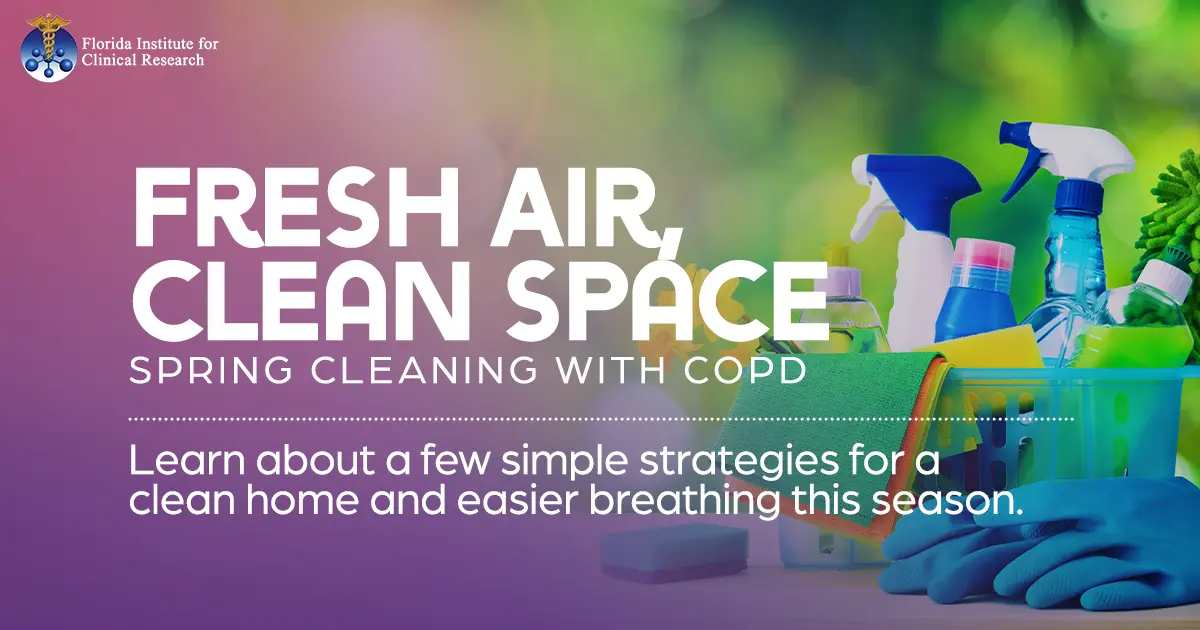Simple strategies for a clean home and easier breathing this season.
Spring is a time of renewal, and there’s nothing quite like a freshly cleaned home to lift your spirits. But for those living with COPD, spring cleaning can feel like a daunting task. Maintaining a clean living space is about more than just aesthetics; it can play a vital role in your overall respiratory health. A clean home can significantly reduce the presence of irritants that trigger COPD symptoms, leading to easier breathing and a better quality of life.
Why Clean? The Benefits of Cleaning For COPD
Dust, mold, pet dander, and other allergens can exacerbate COPD symptoms, leading to increased coughing, wheezing, and shortness of breath. By cleaning regularly, you can minimize these triggers, creating a healthier environment for your lungs. A clean home also reduces the risk of infections, which can be particularly dangerous for individuals with compromised respiratory systems. Imagine fewer flare-ups and more days feeling comfortable in your own space – that’s the power of a clean home, and spring is the perfect time to get a fresh start!
Strategies for COPD-Friendly Cleaning
Achieving a successful deep clean with COPD can be tricky to accomplish without triggering a flare-up. The key is to pace yourself and plan your cleaning strategy!
- Plan Ahead: Break down cleaning tasks into smaller, manageable chunks. Instead of tackling the entire house in one day, focus on one room or task at a time. This prevents overexertion and allows you to take frequent breaks.
- Choose the Right Products: Focus on fragrance-free, hypoallergenic cleaning products. Harsh chemicals and strong scents can irritate your airways. Avoid harsh chemicals like bleach, ammonia, and aerosol sprays, and opt for gentler, natural cleaners. You can also try time-tested household solutions like vinegar, baking soda, and soap. Consider using microfiber cloths, which trap dust instead of dispersing it into the air.
- Ventilation is Key: Open windows and doors to allow fresh air to circulate. This helps remove dust, allergens, and cleaning products from the air. If the pollen count is high, consider cleaning at the end of the day and checking pollen counts before opening windows.
- Dusting and Vacuuming: When dusting, use a damp cloth or a microfiber cloth to prevent dust from becoming airborne. Vacuum regularly with a HEPA filter vacuum cleaner. These filters trap small particles, preventing them from recirculating in your home.
- Delegate When Possible: Don’t be afraid to ask for help. Enlist family members or friends to assist with tasks you find particularly challenging. You can also consider hiring a cleaning service to help with heavier tasks.
- Listen to Your Body: Take frequent breaks, and don’t push yourself too hard. If you start to feel short of breath or experience other symptoms, stop and rest. Hydration is also important, so drink plenty of water!
- Wear a Mask: A dust mask or respirator can help protect your lungs from dust and allergens during cleaning.
By implementing these strategies, you can transform your home into a haven of fresh air and clean spaces, contributing to your overall well-being.Read our blog to learn more about navigating the Florida climate, allergens, and humidity with your COPD!



